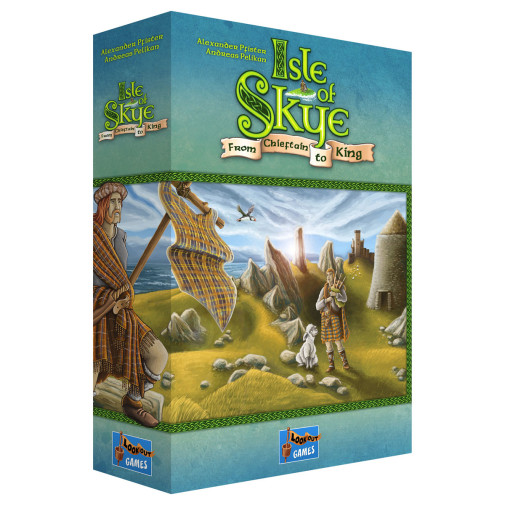We use cookies to make your experience better. To comply with the new e-Privacy directive, we need to ask for your consent to set the cookies. Learn more.
Isle of Skye Game
- Small parts. Not for children under 3 years.
Take on the role of chieftain of a clan competing to build the best land in this thoughtful game of buying and selling land. Aspects of this game are reminiscent of Carcassone, but the variability and mechanics of this game offer more strategy than the aforementioned. Whereas both games revolve around square tiles featuring different landscapes that have to be connected, Carcassone tiles are placed in a central map, while Isle of Skye players each build their own swath of land that scores them points. The main strategy in this game lies in the buying and selling of land tiles. At the beginning of each round (either 5-6 total, depending on the number of players), players receive their income based off of their current landscape, and then each player randomly draws three landscape tiles from the bag. Once everyone has drawn and all of the new tiles are visible, each player secretly chooses one of their three tiles to discard back into the bag and sets the prices for the other two from their money supply. You have to keep an eye on which tiles other players may want to buy from you to complement their landscape as well as which tiles will most benefit you. Setting prices too low means you wont profit much from the sale, but setting them too high may deter other buyers and cause you to spend more of your own money. Once everyone has set their prices, the player screens are moved so that the prices are revealed, and then players each have a turn to buy a tile from another player. If a player buys a tile from you, you receive your money back as well as the coins paid by the buyer. However, if no one buys your tiles, you pay the bank the price and may add the tile to your personal map, always connecting like landscape to like. As with most great games, there is a good balance between resources, causing you to choose your purchases wisely. The round closes with players scoring based on their current landscape. The scoring is an aspect that brings wonderful variability to the game players randomly select four of the 16 scoring tiles at the beginning of the game and set them in the middle of the scoring track in the spaces marked A, B, C, and D. For example, you may score victory points (VPs) for each sheep in your territory or if you are the player with the most gold. However, each round only scores a combination of the scoring tiles after Round 1, you score using the A and B tiles; after the fourth round you score based on the criteria of tiles A, C, and D. This makes all the scoring tiles important, but each at varying points of the game. At the start of each round players receive additional income based on their land and the land sales start all over again. After the final scoring, the chieftain with the best kingdom wins! Steph
1 game board
16 scoring cards
72 landscape tiles
1 cloth bag
5 score markers (wood)
5 bag markers
5 player screens
1 round marker (wood)
1 start player marker
80 coins
| Product Format: | Other |
|---|---|
| Brand: | Lookout Games |
| Author: | Carlo Lavezzi |
| Grades: | 3-AD |
| EAN/UPC: | 4260402315782 |
| Length in Inches: | 10.875 |
| Width in Inches: | 7.5 |
| Height in Inches: | 2.625 |
| Weight in Pounds: | 2.5 |

